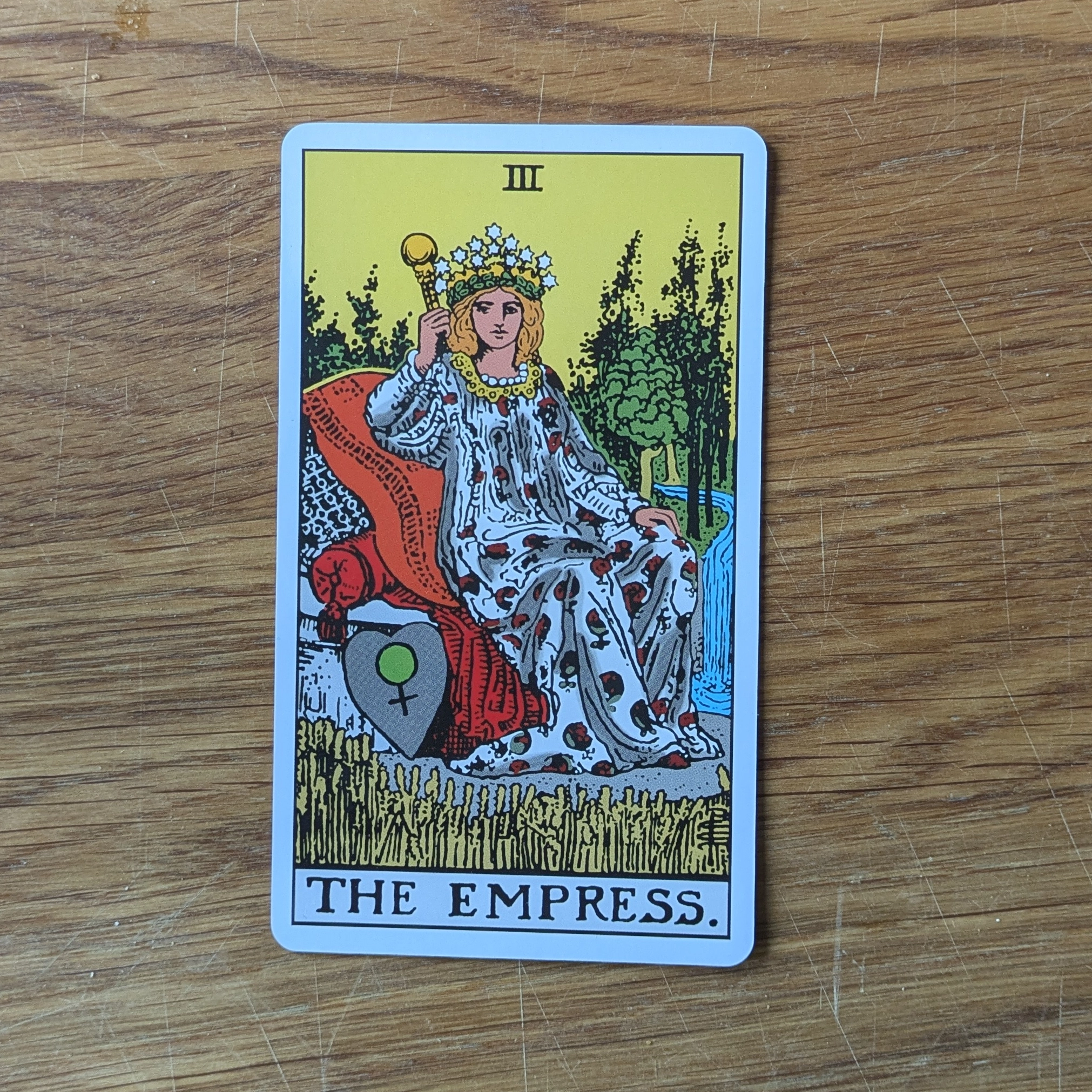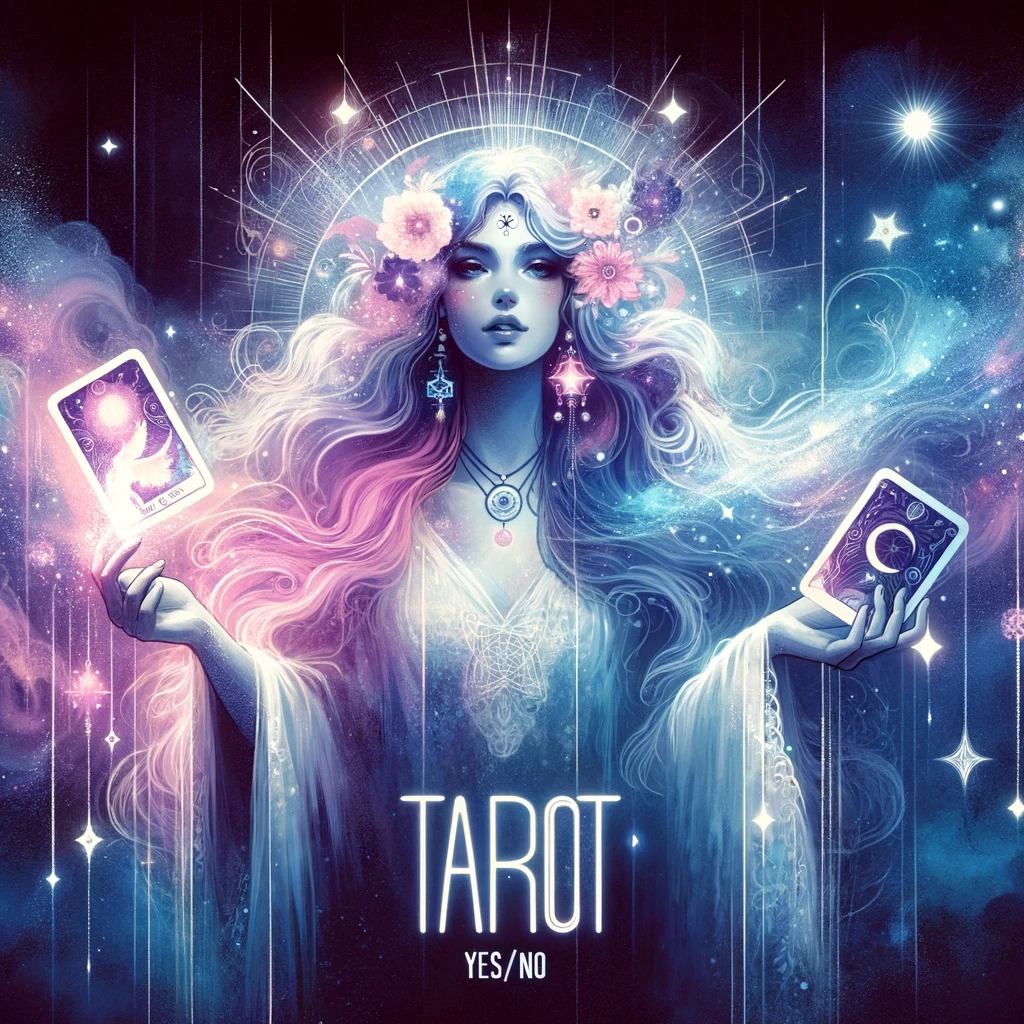For those seeking quick and easy yes or no answers but still want the option of a genuine tarot interpretation. This is a more advanced version of the Yes or No Tarot Spread #1. This time, you can also submit your question and get the spread interpreted according to the cards' real meanings, not only taking into consideration whether the tarot card drawn is upright or not (which is the sole function of Yes or No Tarot Spread #1).
The yes/no tarot spread is ideal for anyone seeking a quick and straightforward answer to their question, with a simple, immediate response. This tarot spread contains only one card and focuses solely on whether the card drawn is upright or reversed.
For artists seeking inspiration or direction in their next painting, this tarot spread offers a guiding hand. Shuffle the deck and reveal the card, which is then interpreted to provide you with a subject that matches the card on various levels of seriousness. Each card is interpreted with its symbolism in mind and how it can be incorporated into your artistic work.
Are you looking for username tips that really stand out on Instagram or other social platforms? Our tarot name generator is the solution for you.
Different ways to do a one-card tarot reading
”Detailed” reading
A detailed one-card tarot reading is a method to gain deep insight and guidance by drawing only one tarot card.
- Preparation: Start by clearing your mind and your space. This may involve sitting quietly for a few minutes or meditating. Then, ask a specific question or request general guidance if you prefer.
- Shuffle and draw a card: Shuffle the deck thoroughly while keeping your question or intention in mind. When you feel the time is right, draw a card from the deck.
- Interpretation: Place the card in front of you. Note whether the card is upright or reversed, as this can affect the interpretation. Use your knowledge of the card’s meaning, your intuition, and the context of your question to interpret the message. Consider both the traditional meanings of the card and any personal associations you may have.
- Reflection: Reflect on how the interpretation of the card can be applied to your situation or question. Tarot cards often provide insights that require contemplation and sometimes action based on the advice offered.
Try this reading online
Yes or No reading
Yes or no tarot readings with just one card are based on the assumption that upright cards tend to signal a ”yes” and reversed cards a ”no”. Here’s how to proceed:
- Question formulation: Like the detailed reading, start by clarifying and formulating your question. The question should be such that it can be answered with a yes or no.
- Shuffle and draw a card: While shuffling the deck, keep your specific yes or no question in mind. When you feel ready, draw a card.
- Determine the answer: If the card you draw is upright, it is interpreted as a ”yes”. If the card is reversed, it is interpreted as a ”no”. Note that some cards may have stronger positive or negative connotations, which can affect the strength of your answer.
- Additional considerations: For deeper insights, consider the card’s traditional meanings. For example, even if a card is reversed and indicates a ”no”, it may contain advice or warnings that are valuable to consider.
Try this reading online
Popular tarot reading – but not optimal.
- Limited perspective: A one-card reading provides only one card as an answer, which can mean a very limited view of the situation. Tarot works best when several cards are laid out to reflect different aspects of a question or problem. This enriches the interpretation and provides a more nuanced understanding.
- Complexity and context: The meanings of tarot cards are deep and multifaceted, and they can vary greatly depending on which other cards they appear with. In an extensive spread, where multiple cards interact, the interpreter can see how different energies and tendencies affect the situation. A single card can miss these nuances and contexts, leading to an oversimplified interpretation.
- The dynamics between cards: In larger spreads, the relationship between the cards can provide important insights into how different factors in a person’s life affect each other. This dynamic element is lost in one-card readings. The interaction between the cards can reveal conflicts, complementary forces, or hidden aspects of a problem.
- Development and advice: Larger spreads, like the Celtic Cross, allow for a more detailed exploration of both problems and solutions and can offer a roadmap or advice for the future. A one-card reading rarely provides this in-depth guidance and may be less useful for someone seeking detailed answers or an action plan.
- Personal development and reflection: One of tarot’s great strengths is its ability to promote self-reflection and personal insight. An extensive tarot spread can be like a mirror reflecting different parts of a person’s psyche, encouraging introspection and self-knowledge. A single card can provide an insight, but usually not with the same depth or breadth.
Despite these limitations, one-card tarot readings remain popular, especially online, where users want quick and easy answers. They can be a good way to start the day with general guidance or as a complement to deeper personal reflections. But for those seeking a deeper understanding or facing more complex decisions, a more comprehensive tarot reading may be more appropriate.






